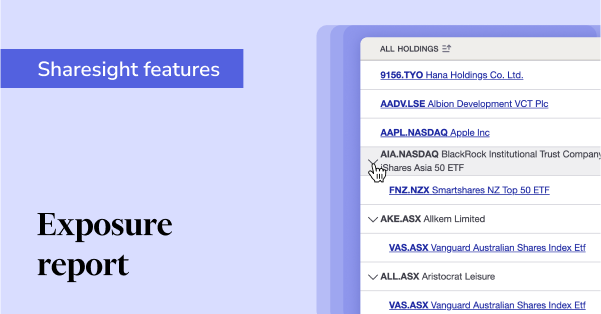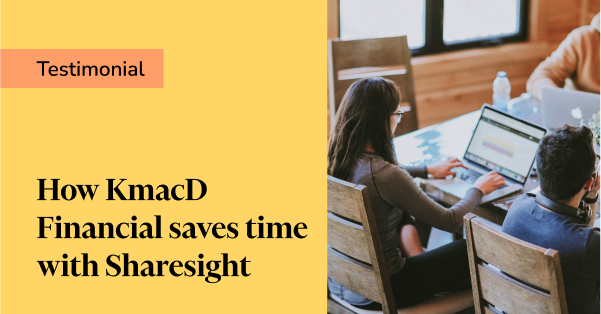What is loss aversion and how to protect yourself from it
Disclaimer: This article is for informational purposes only and does not constitute a product recommendation, or taxation or financial advice and should not be relied upon as such. Please consult with your financial adviser or accountant to obtain the correct advice for your situation.
Human beings are wired to feel the pain of loss much more than the joy of gain. From an evolutionary perspective, this makes sense for the sake of survival in the wild. But evolution and adaptation have taken us far away from the savannas of Africa where our brains were originally wired. In the modern world, our automatic response still works the same way as it used to work in the wild -- seeking to avoid loss at all costs.
In this blog, we look at what loss aversion is, explore examples of how it manifests itself in investing and finally how you can overcome this automatic response and try and shift decision making towards the rational side of your brain.

What is loss aversion?
The concept of loss aversion was developed by Daniel Kahnemann and Amos Tversky, who were behavioural psychologists, and are famous for their prospect theory, which won Daniel a Nobel prize for economics. They were also among the first to develop an economic concept based on experimental results, rather than abstract theories.
In the book "Thinking fast, thinking slow", Daniel Kahnemann walks us through some examples for readers to try out.
In one example, you are offered a gamble on the toss of a coin. If the coin shows tails you lose $100, if it’s heads you win$150. Is this an attractive gamble?
Although the expected value of the gamble is positive, because your probability of gain is more than your probability of loss, most people dislike it. The psychological loss of $100 is much more than the joy of winning $150.
To measure the extent of your aversion to loss, you can ask yourself the following question: What is the smallest gain I need to balance the potential loss of $100 in taking that bet? For most people, this answer is 1.5 to 2.5x.
How does loss aversion manifest in investing?
Loss aversion is something investors need to be mindful of, and can manifest in a number of ways, for example:
- Investing in low-return, guaranteed investments over more promising investments that carry higher risk.
- Holding onto the losers and selling your winners.
- Selling a good stock "to book a profit" when fundamental analysis suggests that to realise a larger profit, you need to hold it for a longer period of time.
- Telling yourself that an investment is not a loss until it’s realized (i.e., when the investment is sold). In other words, we tend to postpone the feeling of loss by not realizing it.
What can investors do to overcome loss aversion?
Investing is about making choices. It involves following a process, establishing a thesis, and then achieving an outcome. The process and the thesis are completely in the investor’s control, whereas the outcomes are controlled by external factors.
Investing is both a rational and emotional process. Rather than deny it, the first step is to accept that we are subjective beings with emotional hot buttons. Then having a system to help shield us from the problems our emotions can lead to as investors.
Ways to help avoid loss aversion
1. Write down your investment thesis
One of the ways to help remove emotion from investing is to write down your investment thesis and regularly revisit it. While there is no one-size-fits-all methodology for creating your thesis, it could be based on global macro trends, financial statements, or your own experience of a business you seek to invest in.
Looking back at your portfolio regularly will help you evaluate whether this thesis still holds true and help guide whether you should change your holdings of that investment.
Some Sharesight customersuse the comments box under the holding section to capture notes about their thesis.

2. Set a stop-loss trigger
Stop-loss triggers in your online broker accounts can help you shield yourself from holding investments in your portfolio that are falling beyond limits you set by automatically liquidating those holdings should they fall beyond a certain point.
3. Take advantage of tax loss selling
In countries where capital gains tax applies to investments, it can be helpful to understand and make the best use of opportunities to engage in tax harvesting or tax loss selling to offset your capital gains. Knowing that you can offset a loss against a gain can be helpful in making the decision to realize that loss by selling those investments.
Sign up to Sharesight and be a rational investor
Being a prepared investor will help you navigate both your emotions and turbulent markets. Fortunately Sharesight was built with the needs of self directed investors in mind. With Sharesight you can:
- Get the true picture of your investment performance, including the impact of brokerage fees, dividends, and capital gains with Sharesight’s annualised performance calculation methodology
- Automatically track your daily price & currency fluctuations, as well as handle corporate actions such as dividends and share splits
- Run powerful reports built for investors, including Performance, Portfolio Diversity, Contribution Analysis and Future Income (upcoming dividends)
- Run tax reports including Taxable Income (dividends/distributions), Capital Gains Tax (Australia and Canada), Traders Tax (Capital Gains for traders in NZ) and FIF foreign investment fund income reports (NZ)
Sign up for a FREE Sharesight account and get started tracking your investments today.
FURTHER READING

See what’s inside your ETFs with Sharesight’s exposure report
See inside your ETFs and get the full picture of your investment portfolio's composition with Sharesight's exposure report.

How KmacD Financial streamlines reporting and saves time with Sharesight
We talk to financial planning firm KmacD Financial about how the Sharesight-AdviserLogic integration helps them save time and streamline client reporting.

Sharesight product updates – November 2023
The focus over the past month has been on implementing additional feature ideas relating to our new (beta) exposure report.